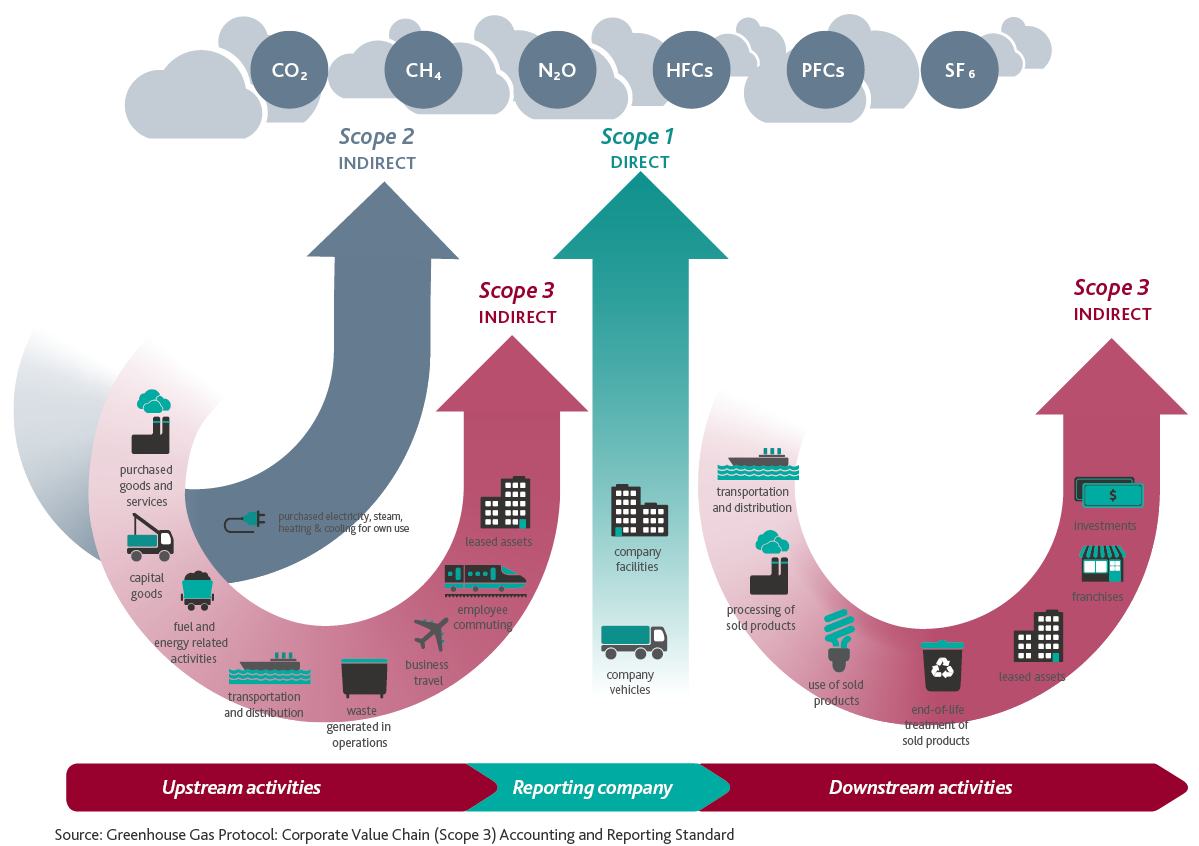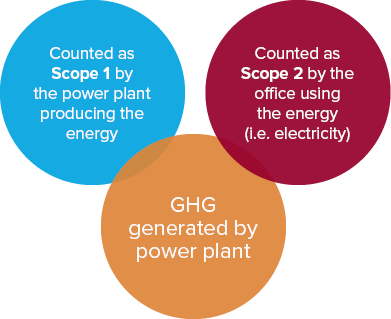In the second half of 2023, our sustainability webinar series walks step-by-step through the GHG Protocol. Aletta Boshoff and Dylan Byrne summarise the key messages from the first part of our event, ’GHG Protocol - Measuring Scope 1 emissions’.
GHG Protocol scopes
After establishing organisational boundaries (which company operations to include) and operational boundaries (which emissions sources include), entities will need to categorise their emissions across the value chain according to the GHG Protocol as either Scope 1, Scope 2 or Scope 3.

(Click to open full size in new window)
The above diagram has been extracted from the Greenhouse Gas Protocol: Corporate Value Chain (Scope 3) Accounting and Reporting Standard and articulates the different scopes.
Scope 1 emissions are direct GHG emissions that occur from sources owned or controlled by the company, such as leased assets.
Scope 2 and Scope 3 are both indirect emissions, but Scope 2 is a special category for emissions resulting from the generation of purchased electricity consumed by the company. Scope 3 emissions are indirect emissions, other than Scope 2, as a consequence of the company's activities but occur from sources not owned or controlled by the company. Scope 3 emissions can result from upstream and downstream activities:
- Upstream activities: Generate emissions before goods and services arrive at your premises, or before they are under your control, such as purchased goods and services, capital goods, inward transportation, waste disposal, business travel, employee commuting, etc.
- Downstream activities: Generate emissions after goods and services leave your premises, or are no longer under your control. Examples include emissions generated from transporting goods to customers, when customers process your products further, and the end-of-life treatment of your products.
It is easier for entities to cut Scope 1 emissions than Scope 2 or Scope 3 because they are under their control. However, for most entities, between 80 and 90 per cent of emissions are Scope 3. Entities may find it difficult accessing emissions data from Scope 3 suppliers. It is also likely to prove a difficult task for entities to reduce emissions in this category because they rely on the cooperation of suppliers and customers whose activities they do not control.
Examples of Scope 1 emissions
Doing a deeper dive into Scope 1, examples of these direct GHG emissions that occur from sources owned or controlled by the company, include emissions from:
- Generation of electricity, heat or steam
- Physical or chemical processing
- Transportation of materials, products, waste and employees
- Fugitive emissions, i.e. leaks and other irregular releases of gases or vapours.
Ownership or control
Emissions are categorised as Scope 1 if the entity owns or controls the emissions source. Categorisation does not depend on the type of emission source. But what does this mean?
An organisation could legally own or lease the source of emissions. If an entity leases an item, it also controls the emissions source because it controls the right to use the asset for the lease period (and recognises a right-of-use asset in the balance sheet). However, any short-term and low-value leased asset emissions would not be classified as Scope 1 emissions but rather as Scope 3. This is because they are not controlled by the entity, resulting from the entity’s upstream activities.
Double counting
Intuitively, it seems wrong that emissions can be double-counted. While emissions can be double-counted across entities, they should not be double-counted within the same entity. This means that emissions will be double-counted between Scope 1 of Entity A, which produces electricity, and Scope 2 of Entity B, which uses electricity produced by Entity A. However, there can be no double counting within the same scope.

Find out more
Want to understand more about the GHG Protocol? Register now for the remaining events in BDO's sustainability webinar series.
If you need a hand in identifying and measuring your Scope 1 emissions, our national sustainability team can help. Contact us today.